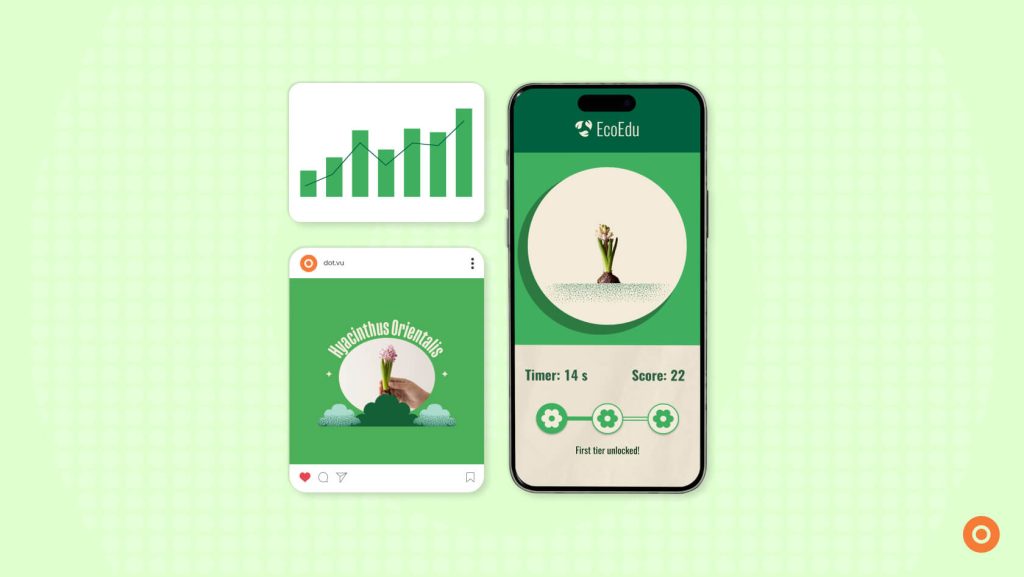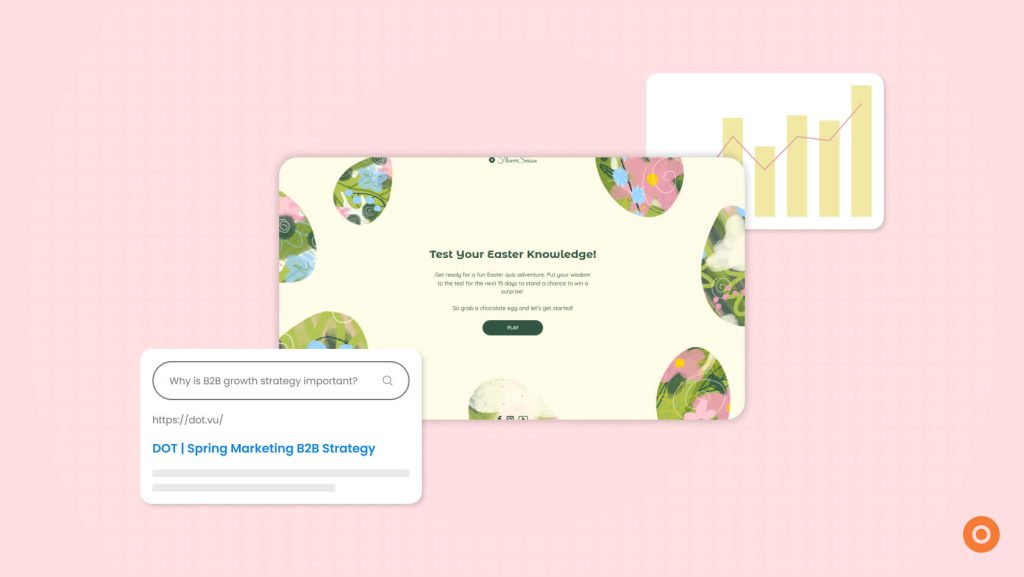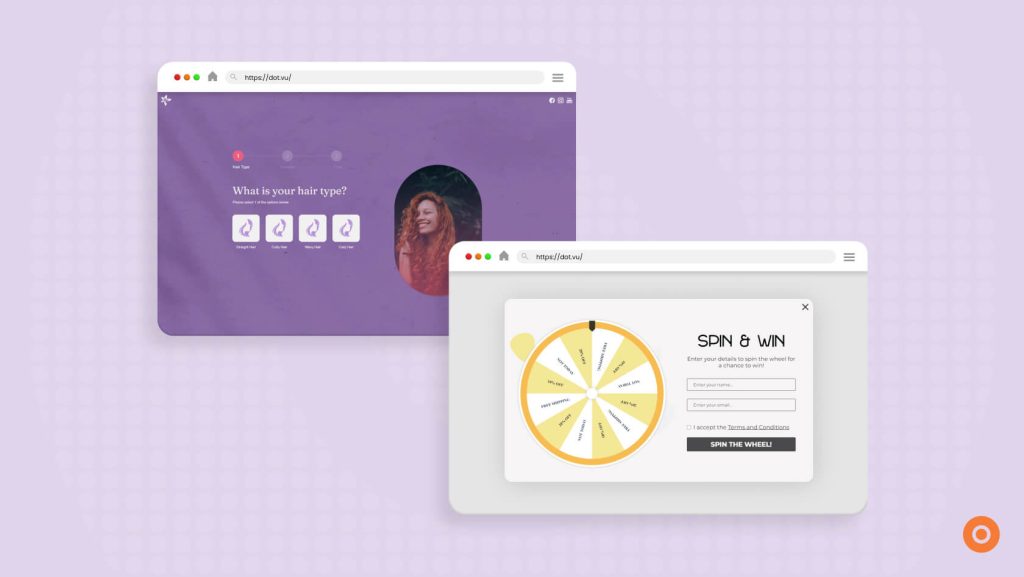
Creative marketing sounds cool until you actually have to do it. Everyone loves “thinking outside the box” until there’s a deadline, a client breathing down your neck, and a campaign brief that’s literally two sentences long (“make it viral”).
But here’s the thing — creativity isn’t chaos. The best creative campaigns don’t just happen in a brainstorm fueled by cold brew and panic. They follow a process. A messy, flexible, but very real process that makes creativity actually work.
If you’ve ever felt like your marketing ideas retire somewhere between “this is genius” and “wait, why didn’t this perform?”, this step-by-step creative marketing guide is your fix:
- What Is Creative Marketing?
- Why Use Creative Marketing
- Step 1: Set Goals & Objectives for Creative Marketing
- Step 2: Research & Audience Insights for Creative Marketing
- Step 3: Ideation & Concepting in Creative Marketing
- Step 4: Plan & Design Creative Marketing Assets
- Step 5: Execute & Distribute Creative Marketing Campaigns
- Step 6: Measure & Optimize Creative Marketing Performance
- Now Go Break the Internet (Strategically)
What Is Creative Marketing?
Let’s keep it simple: creative marketing is what happens when strategy and storytelling have a baby. It’s not just making things “look good” — it’s designing campaigns that people remember because they feel something.
Creative marketing is the art of turning a boring business goal into a human moment. You’re still chasing KPIs, but you’re doing it with brand personality, emotion, and maybe a dash of chaos that makes your audience stop scrolling.
The whole idea of creative marketing is structure disguised as spontaneity.
Every great campaign like Spotify Wrapped follows a creative process, even if it doesn’t look like one. There’s research, planning, iteration. And yes, there’s a ton of testing.
That’s what we’re breaking down here: the step-by-step creative marketing process that helps you go from “random idea” to “revenue-generating campaign.”
Here’s the 411 on creative marketing — check out the full breakdown here.
Why Use Creative Marketing
The internet is loud… Every brand’s out there with shiny colors and catchy lines, all competing for a second of your attention. You scroll for five seconds and get hit with twelve carousels, four “we’re different” headlines, and one awkward stock photo handshake.
Global social ad spend is projected to hit US$276.7 billion by 2025, and audiences are tuning out anything that looks too static.
That’s why creative marketing matters. It cuts through the noise not by shouting louder, but by actually connecting.
If your content still feels a bit one-sided, here’s why static content isn’t enough anymore (and what to do instead).
A structured creative process isn’t about killing spontaneity — it’s about giving creativity direction. You’re not just tossing ideas around to see what sticks; you’re building a story that aligns with your brand, your goals, and your audience’s actual lives.
When you do creative marketing step by step, you get:
- Consistency without boredom. Every idea fits the bigger picture, but it doesn’t feel templated.
- Room for experimentation. You know where to play and when to rein it in.
- Less chaos in execution. No more “whose job was it to post that?” moments.
- Better results. Because your creativity connects to strategy, not vibes alone.
And let’s be honest — random creativity burns teams out. Following a process gives everyone a shared brain. It’s like a safety net for your imagination.
So if your campaigns are feeling a little all over the place (or if your brainstorms end with 30 sticky notes and no plan), this step-by-step approach is about to be your new best friend.
Step 1: Set Goals & Objectives for Creative Marketing
Here’s the truth: most “creative” campaigns don’t go viral not because the ideas were bad — they don’t go viral because no one decided what success actually looked like.
Setting creative marketing goals and objectives is all about clarity and knowing exactly what you want your creativity to do.
A step-by-step creative marketing plan starts here:
- What’s the point?
- Are you building awareness?
- Driving engagement?
- Launching something new?
- Re-energizing a brand that’s gone quiet?
Each one requires a totally different kind of creativity.
That’s where SMART goals come in (Specific, Measurable, Achievable, Relevant, Time-bound). Yeah, you’ve heard that acronym before — but in a creative context, it’s what turns “cool idea” energy into something measurable.
Here’s how it looks when you apply it to creative marketing:
- Specific: “Increase engagement” is vague. “Boost Instagram saves by 20% through interactive carousel posts” is focused.
- Measurable: Trackable KPIs (clicks, conversions, reach) keep your creative work accountable.
- Achievable: A massive outdoor campaign might sound epic, but not if your team’s two people and already stretched thin.
- Relevant: Your creative goals should ladder up to business goals.
- Time-bound: Creativity needs deadlines. Otherwise, your “big idea” becomes a someday project.
The magic happens when you align your creative ambition with your marketing reality. When everyone on the team knows what you’re trying to achieve, every brainstorm, concept, and execution has direction.
That’s the foundation of an executable creative marketing process — clarity before creativity.
Not sure what kind of awareness you’re aiming for? These five types of brand awareness will help you set sharper creative goals.
Step 2: Research & Audience Insights for Creative Marketing
You can’t build a great campaign on “I think our audience will like this.” You’ve got to know. The second step in any step-by-step creative marketing plan is digging deep into research and audience insights — the not-so-glamorous part that secretly decides if your creative ideas actually land.
This is where creative strategy development starts. Start by building your audience personas. Go beyond “target market” and get into mindset. What excites them? What frustrates them? What’s trending in their world that you can tap into before everyone else does?
Start a trend research and competitive creative benchmarking. Watch what other brands in your niche are doing — not to copy them, but to see what’s overdone and where the white space is. If everyone uses the same hook, flip it. If a certain format is gaining traction (say, Interactive Content or humor-driven campaigns), figure out how your brand’s voice could own that space.
Ask yourself:
- What do people in our audience respond to?
- What content formats are getting saved, shared, or replayed?
- What emotions are brands triggering to get attention?
Once you know what your audience responds to, check out these digital customer engagement strategies your customers might love to deepen that connection.
The best creative marketers listen. They scroll like detectives, read comments, reviews, and subreddit threads. They see what their audience jokes about, complain about, and dream about.
Because when your creative ideas are rooted in audience truth, the campaign almost builds itself. That’s the real heart of the creative marketing process steps — data feeds direction, and direction gives creativity purpose.
Step 3: Ideation & Concepting in Creative Marketing
Now we’re at the part where everyone thinks creative marketing is about — the big ideas, the “let’s make something unforgettable” moment. But real talk? Creative marketing ideation isn’t about who can shout the wildest idea in the room. It’s about generating concepts that work — strategically, emotionally, and execution-wise.
After all that audience research, you know what people care about. Now your job is to translate that into campaign ideas that hit those emotional buttons and line up with your business goals. This is where campaign ideation in creative marketing becomes the bridge between insights and execution.
Start with a few key filters:
- Does it solve the right problem? Creativity is great, but if it’s not connected to your brand or audience’s pain points, it’s just decoration.
- Is it doable with your current resources? A 3D billboard that rains confetti sounds amazing until you realize you’ve got a $500 ad spend and a Canva account.
- Will it hold up across channels? Every great idea needs legs. If it only works in one format, it’s not a campaign — it’s a post.
Use creative frameworks to keep brainstorming productivity. Once you’ve got a handful of promising directions, validate them. Run small-scale concept tests. Ask your audience, or even your own team, what grabs their attention. A quick poll or A/B test can save you from launching something that your audience will scroll past.
Creative concept testing doesn’t kill creativity — it refines it. It helps you spot which ideas have real resonance before you pour weeks of production time into them.
When your ideation is grounded in insight and filtered through a smart validation process, you get campaigns that move. That’s the difference between a one-off hit and a repeatable creative marketing workflow template you can use again and again.
Step 4: Plan & Design Creative Marketing Assets
Welcome to the part of creative marketing that nobody puts on a moodboard: the planning. This is where your brilliant idea gets translated into an actual creative marketing execution guide — assets, timelines, people, platforms, and a lot of Google Sheets.
Once you’ve nailed the concept, it’s time to map out every piece you’ll need to bring it to life. That’s your asset plan — the backbone of every campaign that doesn’t implode halfway through launch week.
Start with an asset map and channel plan.
- What formats do you need?
- How will the creative flow across channels?
- A TikTok clip might lead to a landing page.
- A long-form video might need shorter cuts for ads.
- A carousel could spin into an email teaser.
Every touchpoint should feel connected — not like your campaign has split personalities.
This is where your creative brief becomes key. It’s the shared brain for your entire team — writers, designers, strategists, media buyers, even the intern scheduling posts. A strong brief covers:
- The campaign objective (tied to your SMART goals from Step 1)
- The key audience and insight (from your research)
- The main message or emotional hook
- Deliverables, specs, and platforms
- Tone, visuals, and non-negotiables
If you want your creative team to thrive, give them clarity, not just “make it pop.”
Then, define your workflow. A clear creative marketing workflow template keeps the process moving and avoids that classic “where’s the updated version?” chaos. Who’s approving of what? Who’s handling design revisions? What’s the timeline between ideation, production, and publishing?
And don’t skip design direction. Even the most creative concept needs guardrails. Set a visual tone that matches your message — consistency builds recognition, and recognition builds trust.
If you’re mapping out your assets, see how website personalization can make every creative touchpoint feel one-to-one.
Step 5: Execute & Distribute Creative Marketing Campaigns
Alright, you’ve got your concept, your creative assets are looking sharp, and everyone’s finally agreed on the headline (miracles happen). Now comes the fun–terrifying part: executing and distributing your creative marketing campaign.
This step is where strategy meets chaos control. Execution isn’t just posting and praying — it’s a structured rollout, the heartbeat of your creative marketing process steps.
Build a Rollout Plan
Every campaign needs rhythm and timing. Ask:
- What launches first?
- Which channels go live together?
- How long before we start optimizing?
If you’re promoting across multiple platforms (social, email, paid), stagger your launches so the campaign builds momentum instead of burning out fast. Think tease → launch → amplify → sustain.
Sequence Your Channels
Your channel sequencing is what keeps your campaign feeling like a story, not spam. Try:
- Warm up your audience with organic content.
- Follow up with retargeting or remarketing ads.
- Close the loop with paid pushes that drive conversions.
Each phase builds on the last — like storytelling with ad budgets.
Activate Your Media Mix
When it’s go-time, bring your campaign to life through a balanced media mix:
- Paid: ads, boosted posts, partnerships.
- Owned: your website, blog, newsletter, social feeds.
- Earned: press mentions, reposts, and UGC.
Everything should work together — your reels, blog teasers, emails, and ad placements should sound like they’re all in the same conversation.
Amplify What Works
The launch is just the beginning. Keep feeding momentum:
- Boost your top-performing content.
- Repurpose hero assets into bite-sized versions for new channels.
- Collaborate with creators or micro-influencers to extend reach.
- Watch metrics daily and double down on what’s resonating.
You’re not done when you post — you’re done when your audience starts sharing it for you.
Keep Communication Tight
Execution is where campaigns live or die by coordination.
- Use project trackers or workflow tools to keep everyone aligned.
- Schedule regular check-ins so updates don’t get lost in Slack limbo.
- Document everything (trust me, future you will thank you).
This is the moment where your step-by-step creative marketing plan turns into something real — where every brainstorm, every asset, and every “is this final-final?” pays off.
Step 6: Measure & Optimize Creative Marketing Performance
Here’s the undeniable truth: creative campaigns aren’t done when they go live — they’re just entering their feedback era. Measurement is where you separate what looked cool from what performed.
This is the last (and arguably most important) part of your creative marketing process steps — the moment where data meets gut instinct, and you start building your next big win.
Define Your Creative Marketing KPIs
Before you even peek at analytics, make sure your metrics match your mission. Your creative marketing KPIs should connect directly to the goals you set in Step 1.
- Awareness: impressions, reach, video views
- Engagement: clicks, saves, comments, time on page
- Conversions: sign-ups, downloads, purchases
- Brand perception: sentiment analysis, mentions, share of voice
Pick what actually matters for your campaign — not just what looks impressive in a report.
If you’re really looking to increase conversions, this guide on direct response marketing and advertising breaks down how to come up with campaigns that drive immediate action.
Track, Attribute & Analyze
Once your campaign’s rolling, keep an eye on performance in real time.
- Use analytics tools to see which platforms and creatives pull their weight.
- Set up attribution models so you know where results are coming from.
- Compare creative variations — headlines, visuals, CTAs — to see what’s doing the heavy lifting.
A/B testing is your best friend here. Small tweaks can double performance, especially when you catch trends early. In fact, 88% of marketers rely on AI in their current jobs, using it to analyze data, optimize campaigns, and even inspire the next big idea.
Close the Feedback Loop
Optimization isn’t just about numbers; it’s about learning.
- Review results with the team — creative, media, and strategy.
- Discuss what surprised you, what tanked, and what’s worth scaling.
- Document those learnings so your next creative marketing execution guide starts smarter.
This step keeps your creativity grounded in results. It’s not about proving yourself right — it’s about evolving your approach.
Iterate & Scale the Winners
When you spot a pattern that works, amplify it.
- Repurpose top-performing creative into new formats.
- Extend successful campaigns across channels or audiences.
- Build templates or repeatable processes for future projects.
The best creative marketers aren’t just idea people — they’re pattern recognizers. They learn from every launch, every test, every metric. That’s how you build a system of creative marketing optimization that compounds results over time.
So yes, celebrate your wins (preferably with snacks). But then, get curious. Great campaigns are always evolving.
Want to keep your campaigns performing year-round? Here’s why always-on marketing with interactivity is worth it.
Now Go Break the Internet (Strategically)
If you’ve made it this far, congrats — you officially care more about strategy than 90% of marketers who still rely on vibes and luck.
Creative marketing is all about being intentional and spontaneous. Every campaign idea, every asset, every piece of copy connects back to a goal, an audience insight, and a story worth telling.
With 46% of B2B organizations increasing their content marketing budgets, now’s the perfect time to refine your creative process before the competition does.
Follow this step-by-step creative marketing plan, and you’ll build campaigns that actually do something — engage, convert, and stick in people’s minds long after the scroll.
And remember: creativity isn’t a lightning bolt, it’s a system. The more you refine your process, the easier it gets to deliver ideas that feel fresh and drive results.
So yeah, go forth and build something brilliant. (And if someone says “make it viral,” just smile, open your workflow doc, and show them the process instead 😉). Try out any of our 300+ Interactive Content templates and start building your creative campaign!



